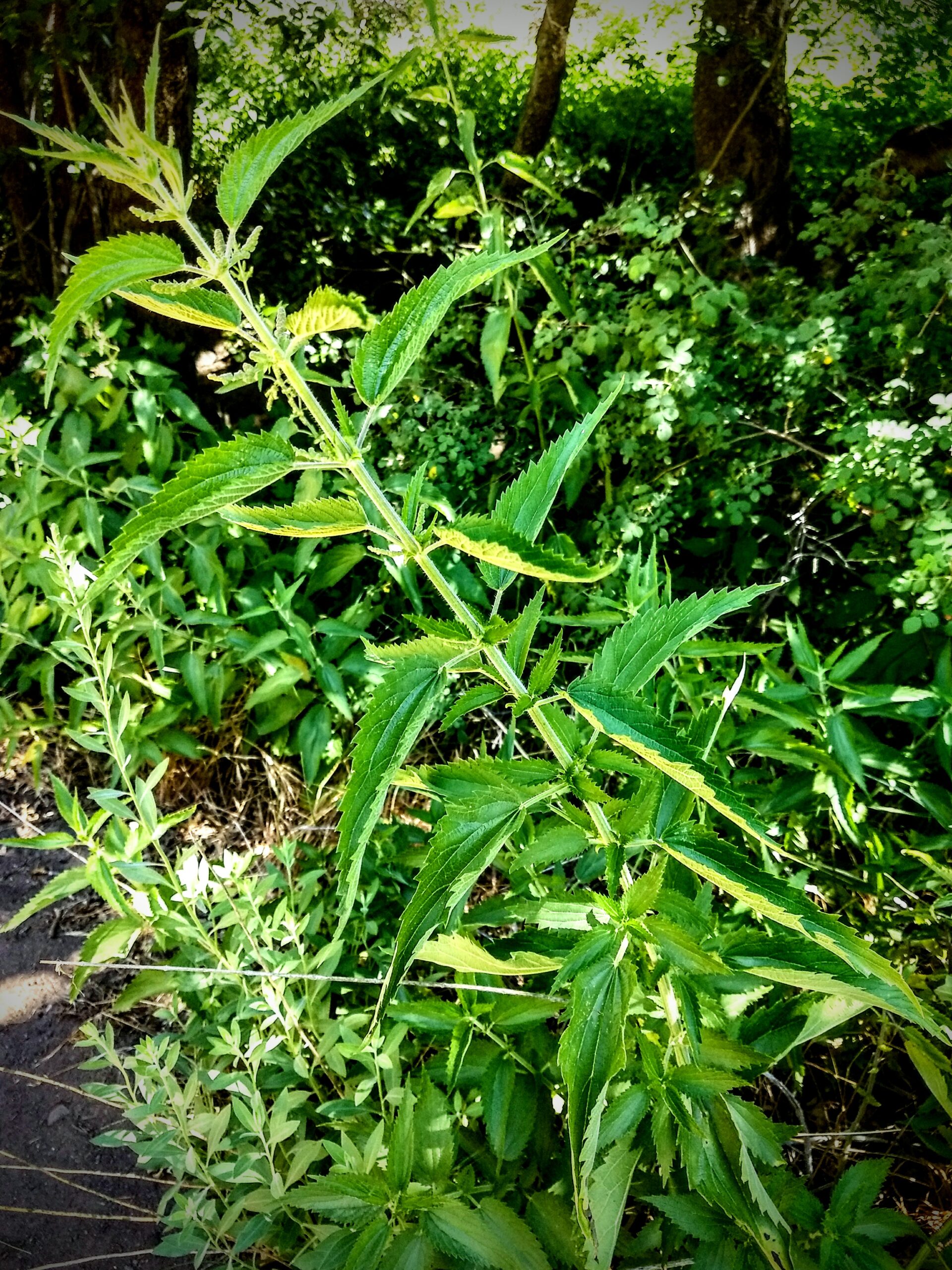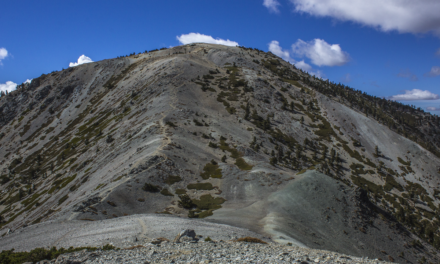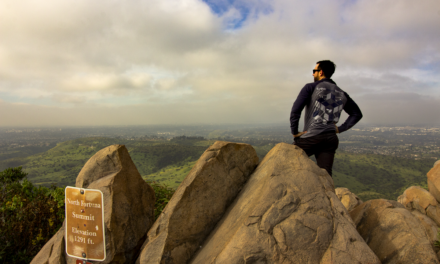Stinging Nettle is a plant all hikers should be aware of. Coming into contact with this plant can cause skin irritation, hives, and burning pain. This guide to will cover everything hikers need to know about stinging nettle from how to identify the plant, what happens when skin comes into contact with the plant, symptoms, treatment, and when to seek emergency medical attention.
What Hikers Need To Know About Stinging Nettle

A large patch of stinging nettle on an overgrown part of a trail in San Diego, California.
Like Poison Oak (Ivy or Sumac), Stinging nettle has a very wide range across the globe. However, it’s native range is across Europe, Asia, northern Africa, and North America. I first learned about this plant incidentally when I came into contact with it while attempting to do a hike at Palomar Mountain. I walked into a portion of the trail that was overgrown with shoulder high plants and suddenly and felt a stinging sensation across my arm, leg, and neck. Moments later I started getting hives in the affected area.
Stinging Nettle Description
Stinging nettle, also known as Urtica dioica is a perineal plant that grows during the warmer spring and summer months then begins to die down with cooler temperatures and less sunlight. A full grown stinging nettle can range anywhere from three to seven feet tall. The plant grows from a long stem with long, serrated, and triangular leaves that grow off the side. The leaves are anywhere from one to six inches long. At the plants maturity it will bear green and brown flowers.
Stinging Mechanism
Unlike Poison Oak which gives its allergic reactions through oil in the plant, stinging nettle creates its painful reaction through small spines and called spicules that are grown on the leaves and stems of the plant. The spicules aren’t microscopic but smaller ones can be difficult to see with the naked eye. When the skin comes into contact with the sharp small spicules they break off and get stuck inside the skin. The broken spicules release irritants like histamine, serotonin, leukotriene, and acetylcholine amongst other chemicals that cause the allergic reaction.
Stinging Nettle Symptoms
The majority of the time, reactions are mostly localized skin irritation also known as dermatitis. Sometimes people will develop a generalized rash at the site called urticaria. At the local site there is usually redness, burning, itching, and a generalized rash. Sometimes hives or blisters will form. The onset is almost instantly after coming into contact with the plant and usually lasts for twenty-four to forty-eight hours. Sometimes severe symptoms like a life threatening allergic reaction can occur (see more on that below). It’s not uncommon to feel a sharp itching sensation from residual nettles that are still in the skin for a few to several days.
Stinging Nettle Treatment
Anti-itch medications like creams containing hydrocortisone and antihistamines like Benadryl can bring some relief. The most important thing to do is to remove the spicules from the skin to prevent further irritation. I was told by a park ranger that running a credit card against the surface of the skin can help to remove the spicules. However, I’d like to caution people against doing this. The sharp edge of a credit card can break the spicules into smaller pieces making it harder to remove them. Placing a strong piece of tape on the skin and pulling it off can help to remove them. If you can see the spicules with your eye, removing them with tweezers is also possible.
When I came into contact with stinging nettle, I tried anti-itch creams and Benadryl but neither of those medications brought much relief to the burning and itching. What worked the most for me was a cool compress. It’s advised that if a person does come into contact with the plant, to avoid touching the affected part of the skin for ten minutes. However painful and itchy it may be, scratching the irritation can increase the length of time that the pain and itching can persist.
The New Zealand Ministry Of Health developed these guidelines for treating skin irritation from stinging nettle:
- Wash the affected area with soap and water as soon as possible to relieve the sting and remove the nettle hairs. If no water is available, clean the area with a cloth or other available material.
- Apply a paste of baking soda and water.
- Avoid scratching or rubbing the itchy areas.
- Use cool, light bedding and clothing to help relieve the itching.
- Avoid extreme heat. Lukewarm baths and showers help to keep the irritation from getting worse.
- Apply cold compresses.
- Antihistamines such as Telfast, Claratyne and Phenergan may relieve itching and swelling. A cream with hydrocortisone will reduce inflammation. You can get these from your pharmacy.
When To Seek Emergency Medical Attention
The majority of stinging nettle complaints are minor allergic reactions where the skin came into contact with the plant. At the local site there can be redness, itching, and a generalized rash. Sometimes rare cases of a severe reaction can occur where the toxins trigger a life threatening immune response from hypersensitivity to the toxins. If there are any symptoms of shortness of breath, wheezing, swelling around the lips or throat, severe rash, fast heart rate, blue or red colored skin, or dizziness call 911 or have someone call 911 and get to an emergency room as soon as possible.
Have you had an experience with stinging nettle? Share your experience or remedies in the comments below.
Sources:
- N.a. “Nettle (Stinging).” Wildflowers. 2005-2018. Web. 18 September 2018.
- N.a. “Stinging Nettles.” New Zealand Ministry Of Health. Web. 18 September 2018.





